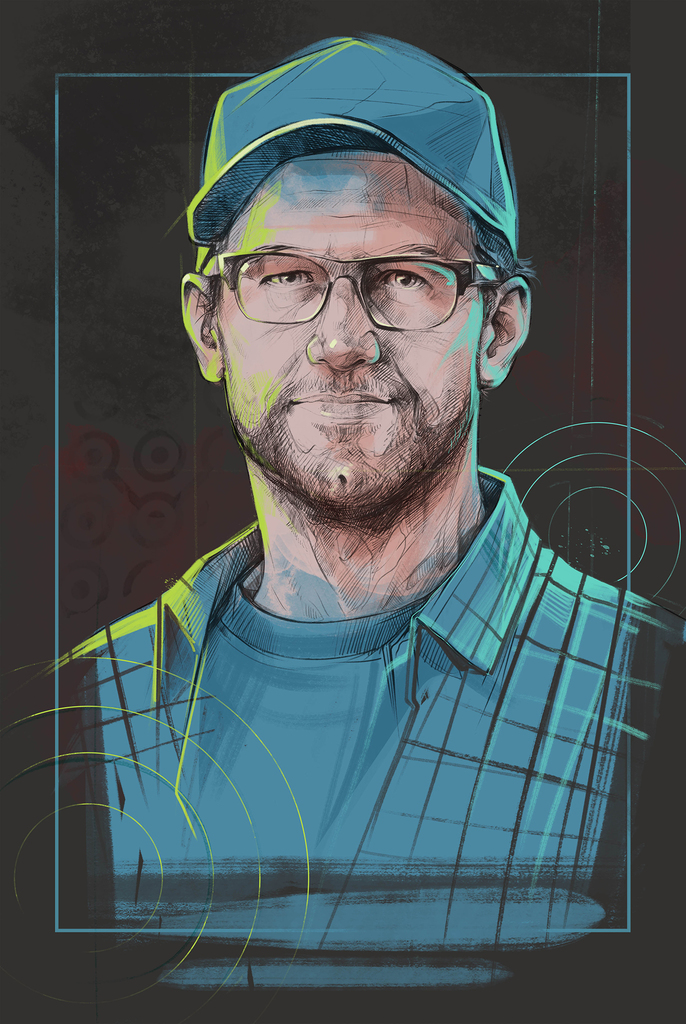The old business playbook went out the window two decades ago, after the first wave of soon-to-be internet behemoths entered the stage. Google and Amazon went from garage projects to the most powerful corporations in the world almost overnight. PayPal, Facebook, Netflix and others followed suit, creating new empires at a dizzying rate. One could say they succeeded because the timing coincided with the emergence of consumer internet. But that’s the kind of half-truth that does more to obscure the real lesson than to explain it. After all, nothing prevented incumbents in retail, banking, even in the tech’s old guard, from harnessing the power of the Internet early on. What these then-startups-now-giants did was nowhere near as mundane as build things for the internet. The real common denominator is that they understood how the web allows companies to work differently. How it enables products to be built faster, cheaper, and closer to its end user.
The effect of all this you might ask? Alphabet (Google’s parent company) brings in $19 billion of annual profit with less than 80,000 employees, next you have Facebook making $12 billion with 20,000 people, and not to mention eBay, that’s $7 billion with 12,000.
Start-up’s or modus operandi have been analyzed from every angle imaginable by scholars, investors, and founders themselves. Clayton Christensen’s The Innovator’s Dilemma, Eric Ries’ The Lean Startup, Steve Blank’s The Four Steps to Epiphany and countless other publications mapped out the success of start-ups taking on incumbents. And yet, few people in legacy businesses listened. Now, they are helpless again. Airbnb is successfully taking on hospitality, Spotify has become a household name in music, even eyewear designers are not safe from disruption courtesy of Warby Parker, proving that you don’t have to be a tech company to learn from the startup playbook. None of this is surprising. When Google and co. came around and flipped the rules of product and business model development upside down, large enterprises had often been around for decades, sprawled across the globe, with tens or hundreds of thousands of employees. They were too paralyzed by their own corporate inertia to act. After all, making a change to how things are done in a corporation is an undertaking that will touch on every one of these offices, processes, and employees.
Reinventing how a company like this thinks is a task of overwhelming proportions. In fact, changing corporate culture at an enterprise scale is so hard that most companies don’t even try until it’s too late. This where Start-up as a Service comes in.
Let’s think of this process as outsourcing a seed that will be planted in a company that will then grow organically to change the culture from within. Planting that seed is exactly what Treeline does. We left the noise of Northern California for a San Diego beach but that doesn’t stop us from staying on the bleeding edge. We started by creating some of the earliest apps for the App Store and now we’re onto building hardware to usher in a ubiquitously connected world of people, places, and machines. Doing this takes applying our own mix of Design Thinking, Lean Startup methodology, and Agile development into something we call StartUp as a Service. SUaaS empowers our development partners to tackle creative and technical issues at start-up speed using the novel methods and cost effective tactics driving today’s innovation leaders. We didn’t read a bunch of books and attend seminars to get a certificate to hang in our cube (and not only because we don’t have cubicles) but we live what we preach. We hire entrepreneurs, PMs, designers and developers from leading startups and innovative companies in the US and Europe and not only deliver magical products and experiences for clients, but regularly launch our own startups—most recently Avimesa and Platform Science. The knee jerk reaction to Start-Up as a Service is, “we have the people to do this ourselves,” my answer is simple: then why haven’t you? Majority of legacy corporations have by now established innovation teams and accelerators. As they send people to conferences to get “black belts” in this or that new technique, make them watch TED Talks, and enroll them in Stanford courses on disruptive innovation. Then after these tired steps, these people come back to their middle management positions and somehow don’t make their companies more innovative. Enterprise’s end up playing catch-up then when what was a scrappy start-up a few months prior is suddenly biting into their market share at an alarming rate. The start-up mentality is not a matter of resources it’s a matter of attitude and willingness to act; because even with the wealth of books, courses, and podcasts available, innovation is not something you learn – it’s something you practice. This is why the solution needs to come from the outside. However not from consultants, coaches, and guest speakers as they will come and go along with the change they try to impose. Unlike an actual start-up, who will work from inside the company, hands on in its approach to the products and services.
SUaaS isn’t just a method; it’s a philosophy for getting stuff done. The core component of Start-up as a Service is bringing on board a team of people who cut their teeth on start-ups: entrepreneurs, accelerator alumni, former investors. People with mentality that’s the opposite of enterprise quarter-by-quarter approach but also experienced enough to keep their eyes on the prize and know how to win it.
As any early-stage investor will tell you, start-ups are volatile and unpredictable but if there’s one factor that can give you a hint about the future performance, it’s the founding team. Not the business plan, not even the product itself, but the skills, experience, and chemistry between the people. If you trace the history of successful startups, you will notice that many of them didn’t start with the products they eventually launched. They just had a team strong enough to know when it’s time to start over. For example, Twitter began as a podcasting service, Slack’s founding team was working to create a video game, and Pinterest was supposed to be a shopping app. Their pivots were drastic and lead to explosive growth. This is because good start-up teams know that uncertainty is an inherent part of business in an always-accelerating world. Pivots and uncertainty aren’t exactly music to the ears of corporate managers. Much less failure. However if you want to innovate you need to embrace them all. Embrace failure, probably isn’t the sales pitch you were expecting to hear but there’s no way around this. One of the fundamentals of the Lean Startup methodology is the idea that a business doesn’t know what the customers want but more importantly, the customers don’t know either. This means that product development and shaping a business model are not neatly timeboxed processes with a clear finish line. They are an endless loop of discovery and applying the discovered knowledge in practice. You will fail in the process – not because you’re incompetent but because everybody does.
The goal of Start-up as a Service is not to eliminate failure from your projects, that will never happen. The goal is to make that feedback loop we mentioned as short as possible, to make the continuous discovery provide for constant improvement, and when needed, a sharp pivot.
To achieve that, we marry the most important parts of Lean and Human Centered Design methodologies. They extract the two crucial advantages of start-ups: speed and proximity to the customer. Speed means rapid prototyping, pushing out a minimum viable product, gathering feedback, and restarting the process, over and over again. Proximity to the customer focuses on the feedback part. Human Centered Design is about listening to what they say about it and observing what they do with it. It’s an ethnographic approach to product development. It’s necessary, because there is nothing more important in building the product than understanding the people using it – and yet there is no thing that large corporations put aside faster than this. One of the biggest differences between startups and established companies is the consumers’ perception, and it’s extremely difficult to protect a business from being disrupted if the public is cheering for the disruptor. This brings us to the final argument for Start-up as a Service: start-ups are cheap. Bureaucracy, middle-management, and overblown decision chain consume truckloads of money. Start-ups don’t have that because they simply can’t afford it. Early in their existence they are always trying not to die – so they cut anything that requires money and time but does not directly contribute to establishing a scalable business model. A quasi-independent start-up working within the structures of an enterprise will not be stifled by frugality – it will thrive on it. It’s sort of a business version of constraint-driven design in the way it unlocks creativity by blocking the obvious, established path. When you hire Treeline, we’re only going to do two things: build products and talk to customers. Of course if it was simple, any organization would be able to do it. For large enterprises it requires a dramatic and often jarring shift in focus. Start-up as a Service is an evolving method for creating an innovation engine inside your organization, aligning efforts on what’s most important: building products and talking to customers. Our goal here is to open a conversation on ideas around building an innovation culture and how to create the tools, methods and atmosphere for it to take root throughout everything the organization does. F. Marek Modzelewski Illustration by Aneta Fontner-Dorożyńska

The Age of Startup as a Service is Upon UsApril 20, 2018



